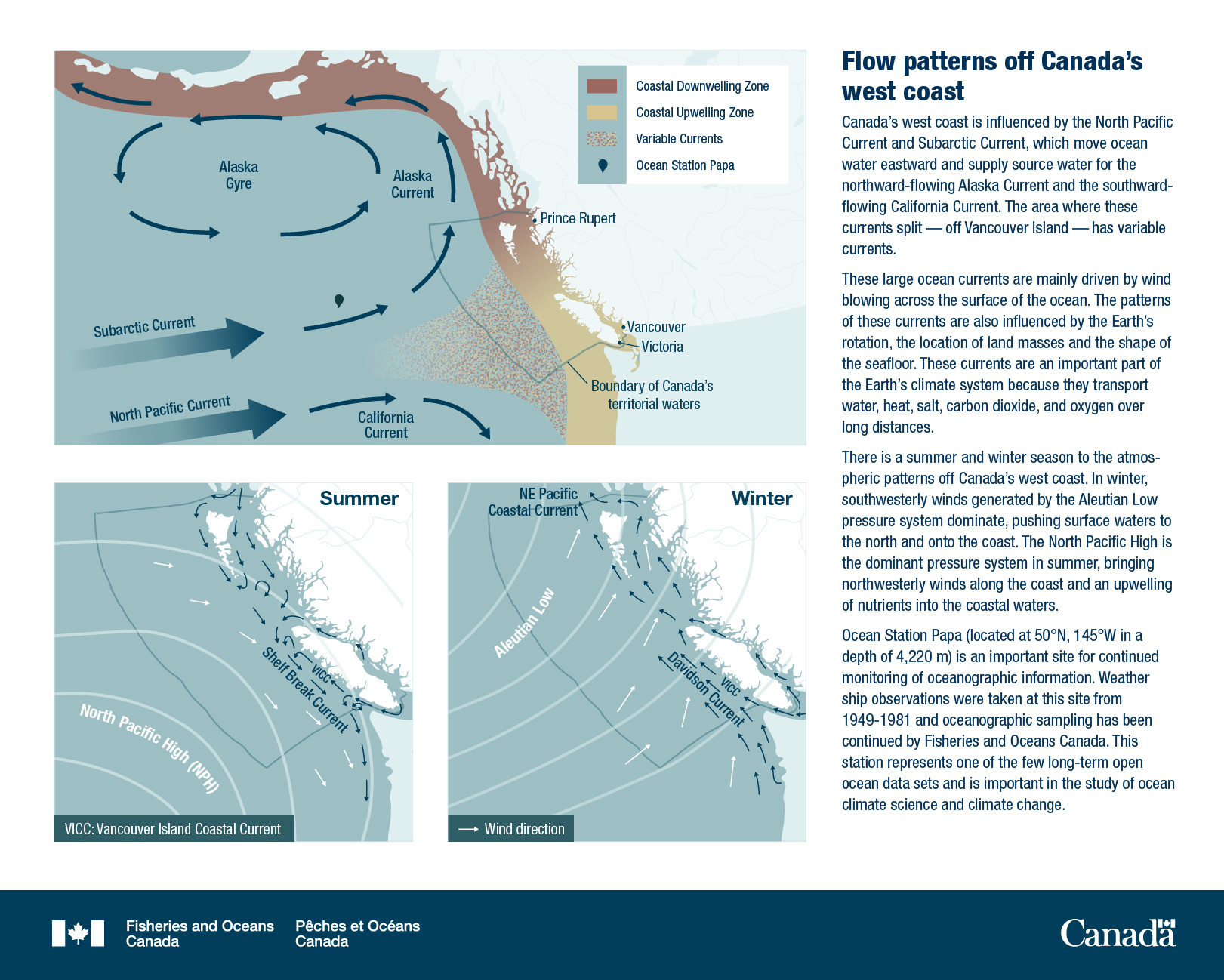Canada's Oceans Now: Pacific Ecosystems, 2021 - Flow patterns off Canada's west coast

Description: Canada’s Oceans Now: Pacific Ecosystems, 2021 - Flow patterns off Canada's west coast
Three maps indicate the flow patterns off currents off Canada's west coast. The top map shows major currents in Canada's Pacific Ocean as well as upwelling and downwelling zones. The subarctic current flows above the North Pacific current eastward. These currents split north and south respectively along the coast of North America. The Alaska Gyre spins counter clockwise off the coast of Alaska. Two maps sit below the top map, left shows summer and right shows winter atmospheric patterns off Canada's Pacific coast.
Flow patterns off Canada's west coast
Canada's west coast is influenced by the North Pacific Current and Subarctic Current, which move ocean water eastward and supply source water for the northward-flowing Alaska Current and the southward-flowing California Current. The area where these currents split — off Vancouver Island — has variable currents.
These large ocean currents are mainly driven by wind blowing across the surface of the ocean. The patterns of these currents are also influenced by the Earth's rotation, the location of land masses and the shape of the seafloor. These currents are an important part of the Earth's climate system because they transport water, heat, salt, carbon dioxide, and oxygen over long distances.
There is a summer and winter season to the atmospheric patterns off Canada's west coast. In winter, southwesterly winds generated by the Aleutian Low pressure system dominate, pushing surface waters to the north and onto the coast. The North Pacific High is the dominant pressure system in summer, bringing northwesterly winds along the coast and an upwelling of nutrients into the coastal waters.
Ocean Station Papa (located at 50°N, 145°W in a depth of 4,220 m) is an important site for continued monitoring of oceanographic information. Weather ship observations were taken at this site from 1949-1981 and oceanographic sampling has been continued by Fisheries and Oceans Canada (DFO). This station represents one of the few long-term open ocean data sets and is important in the study of ocean climate science and climate change.
Forces driving Canada's Pacific
- Coastal Downwelling Zone
- Coastal Upwelling Zone
- Variable Currents
- Ocean Station Papa
- Prince Rupert
- Vancouver
- Victoria
- Boundary of Canada’s territorial waters
- Alaska Gyre
- Alaska Current
- Subarctic Current
- North Pacific Current
- California Current
Summer
- Shelf Break Current
- North Pacific High (NPH)
- VICC: Vancouver Island Coastal Current
Winter
- NE Pacific Coastal Current
- Aleutian Low
- Davidson Current
- VICC
- Wind direction
Related links
- Date modified: